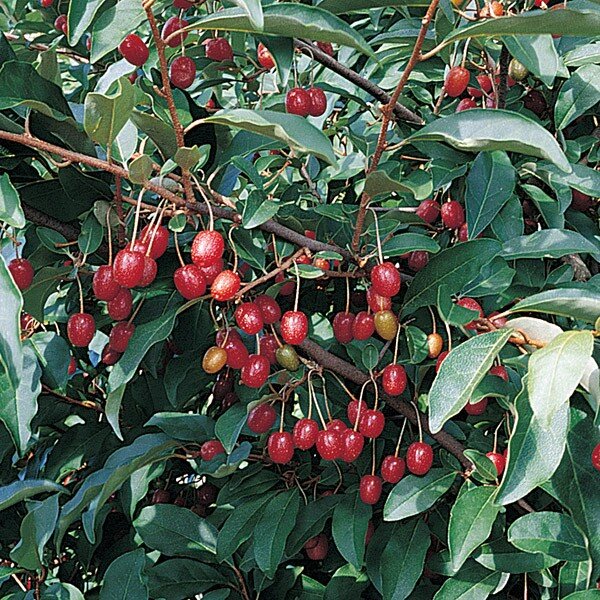Welcome to my Food Forest where I grow an number of fruits in the Bee Better Teaching Garden. Information in this fruit series is based on knowledge I’ve gained growing in hardiness zone 7b, in Raleigh, North Carolina. Helen Yoest
Kind:
Latin Name: Elaeagnus multiflora ‘Sweet Scarlet’
Common Name: Goumi Berry
Type: Deciduous to semi-evergreen shrub
Height: 6 to 10 feet
Spread: 6 to 10 feet
Pollination: Self-fertile, most of the time, but better with a friend.
Fruit Health Benefits: Goumi berries are high in vitamin A and E, bioactive compounds, minerals, flavonoids and proteins. Their lycopene content is the highest of any food and is being used in the prevention of heart disease and cancers and in the treatment of cancer. Cooking the fruit increases the lycopene content.
The fruits and seeds of the Goumi are a good source of essential fatty acids as well which is very unusual for a fruit. The seeds are also edible although somewhat fibrous, and are especially high in proteins and fats.
Wildlife Benefits: Birds love them!
Origin of species: China, Korea, Japan
Cultivars: ‘Sweet Scarlet’ is what we grow. ‘Red Gem’ is also a good cultivar to grow.
Culture Information:
Sun: Sun to part shade
Water: Medium
Zone: 4 to 9
Years to bear fruit: 2 ti 3
Harvest Time: May, June
Care:
Plant:
The shrubs can tolerate any kind of soil, from sand to clay and acidic to alkaline. They will grow in nutritionally poor soil and polluted air, and will do well in full sun or partial shade. They can even tolerate salty sea air. In other words, growing goumi berries does not take a lot of special care.
Fertilizer/pH: 6.0 to 6.5. It is recommended to fertilize at the same time as you water using a time released fertilizer 8-3-9 or similar to help Goumi Bushes grow and produce a substantial crop. These bushes are moderate feeders and may require multiple feeding during the growing season.
Mulch: Add an organic mulch around the plant.
Groom/Prune: Not necessary.
Pest/Disease Control: No serious insect or disease problems.
Propagation: Softwood cuttings.
Comments:
I know, it’s an Elaeagnus or Ugly Agnus by another name. ‘Sweet Scarlet’ is not invasive like the Autumn Olive, Elaeagnus umbellata. I wrote about Goumi in my third book, Good Berry Bad Berry.

